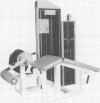Abstract
Objective:
Hamstring injuries can be quite debilitating and often result in chronic problems. Eccentric muscle actions are often the last line of defense against muscle injury and ligament disruption. Traditionally, the focus of hamstring strength rehabilitation has been on concentric muscle actions. The purpose of our study was to compare hamstring muscle strength gains in concentric and eccentric hamstring strength training.
Design and Setting:
A randomized-group design was used to examine differences in 1-repetition maximum (1 RM) and isokinetic strength values among 3 groups of subjects. Subjects were tested in a biomechanics laboratory using an isokinetic dynamometer, while training was carried out in a physical therapy outpatient clinic.
Subjects:
Twenty-seven healthy male subjects (age = 22.9 ± 3.1 years, wt = 81.8 ± 12.9 kg, ht = 178.6 ± 7.2 cm) participated in this study. Subjects were randomly assigned to 1 of 3 treatment groups: eccentric training, concentric training, or control.
Measurements:
Subjects performed hamstring curls using an isotonic weight training device. Pretest 1 RM weight values were determined for all subjects using a standardized 1 RM protocol. In addition, maximum concentric and eccentric isokinetic strength values for knee-flexion strength were determined. Control group subjects refrained from weight training for 6 weeks. Subjects in the training groups trained 2 days per week for 6 weeks (12 sessions). After 6 weeks of training, all subjects returned for 1RM and isokinetic posttesting.
Results:
The concentric group improved 19%, while the eccentric group improved 29%. The control group subjects did not show any significant change over the 6 weeks. In addition, there were improvements in eccentric isokinetic peak torque/ body weight ratios at both 60 °s and 180° from pretesting to posttesting in the eccentric training group only.
Conclusions:
Our results demonstrate the effectiveness of isotonic strength training on the development of hamstring muscle strength. More important is the dramatic effect of eccentric strength training on overall hamstring muscle strength, both isotonic and isokinetic. Clinicians should consider using eccentric hamstring strengthening as part of their rehabilitation protocols for hamstring and knee injuries.
Keywords: 1RM, peak torque/body weight ratios, enhanced eccentrics, isotonic, isokinetic
Full text
PDF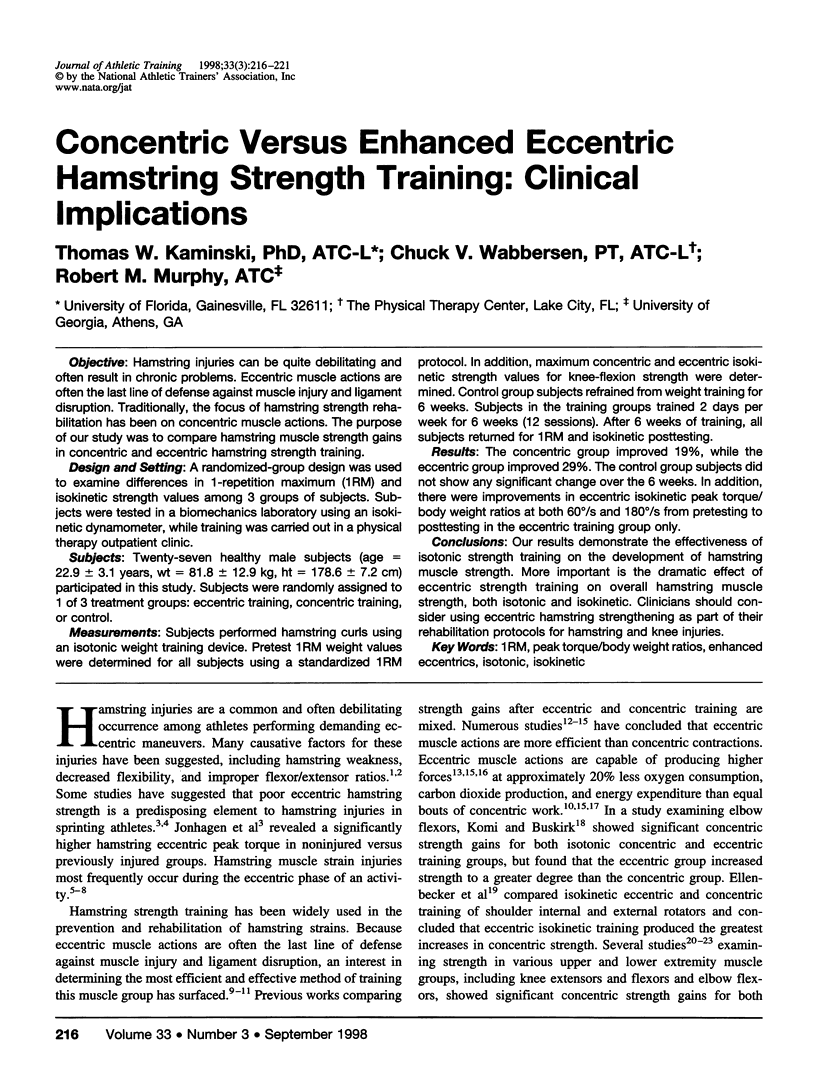
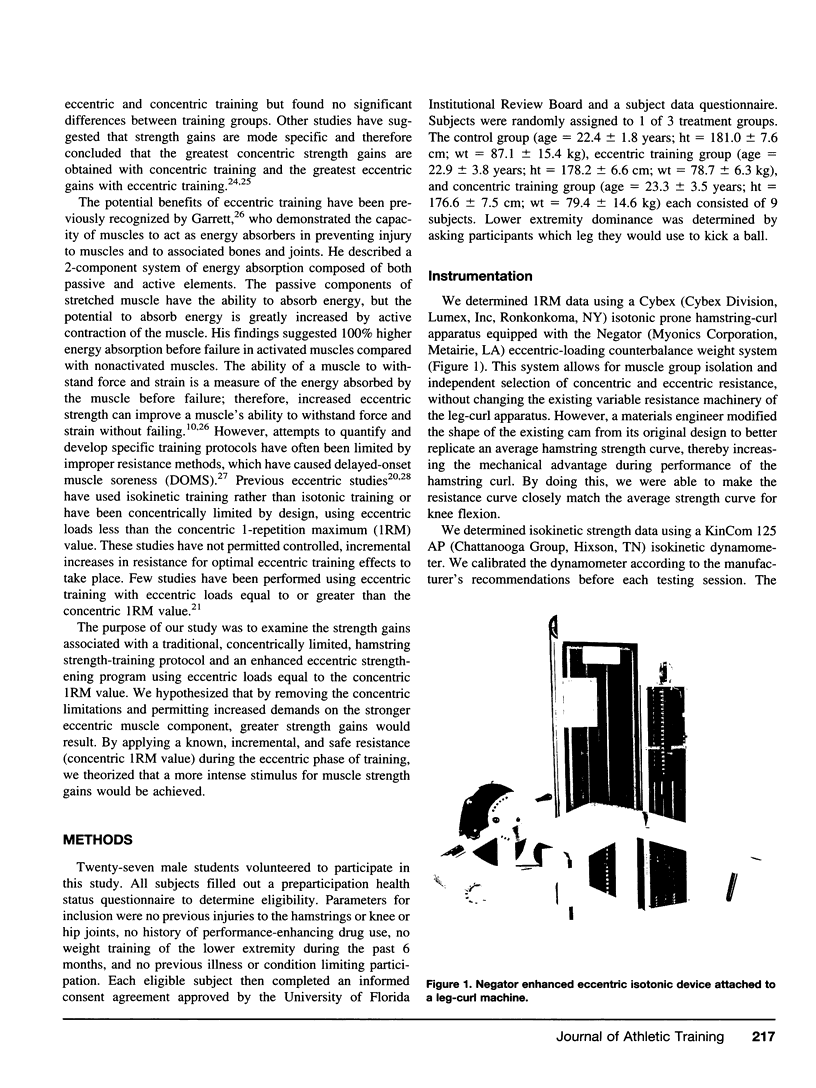
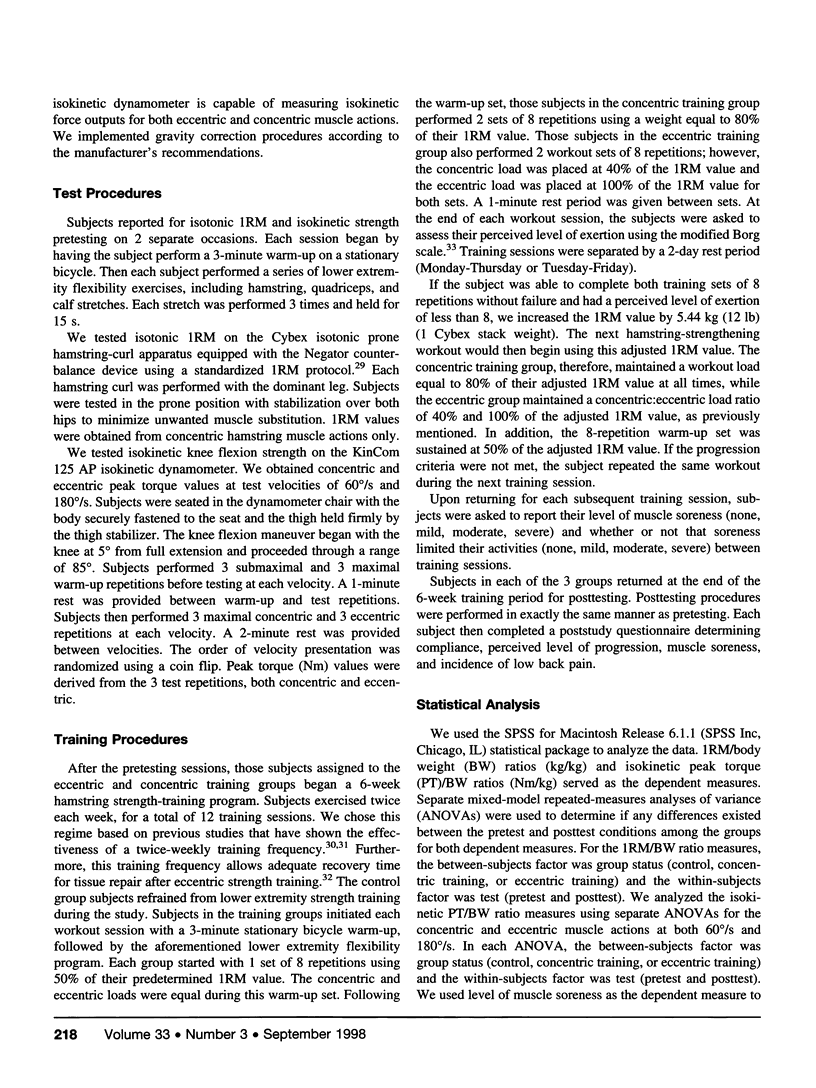
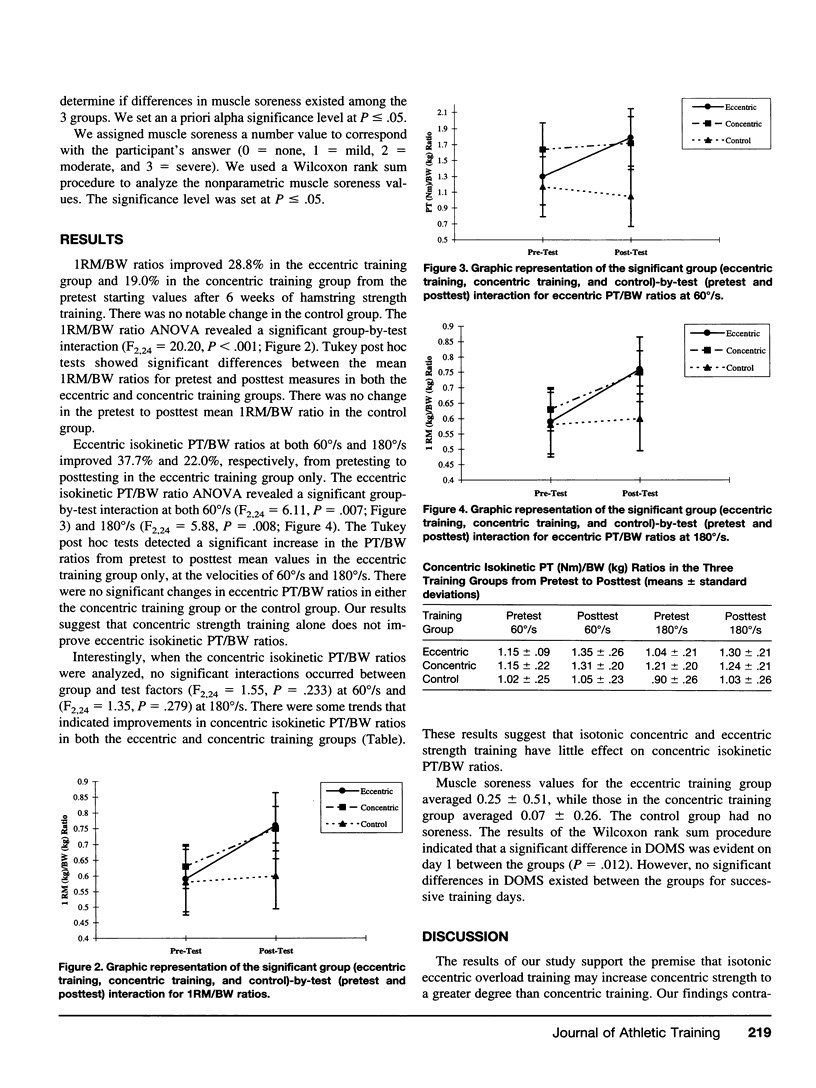
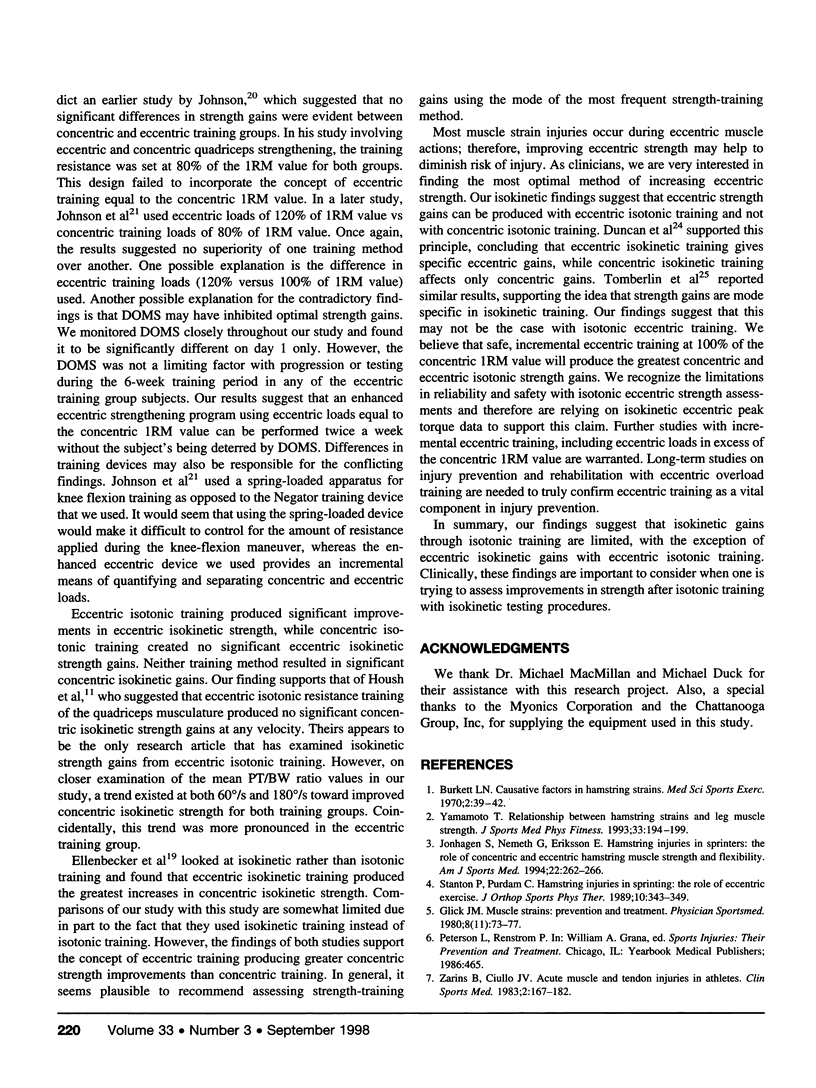
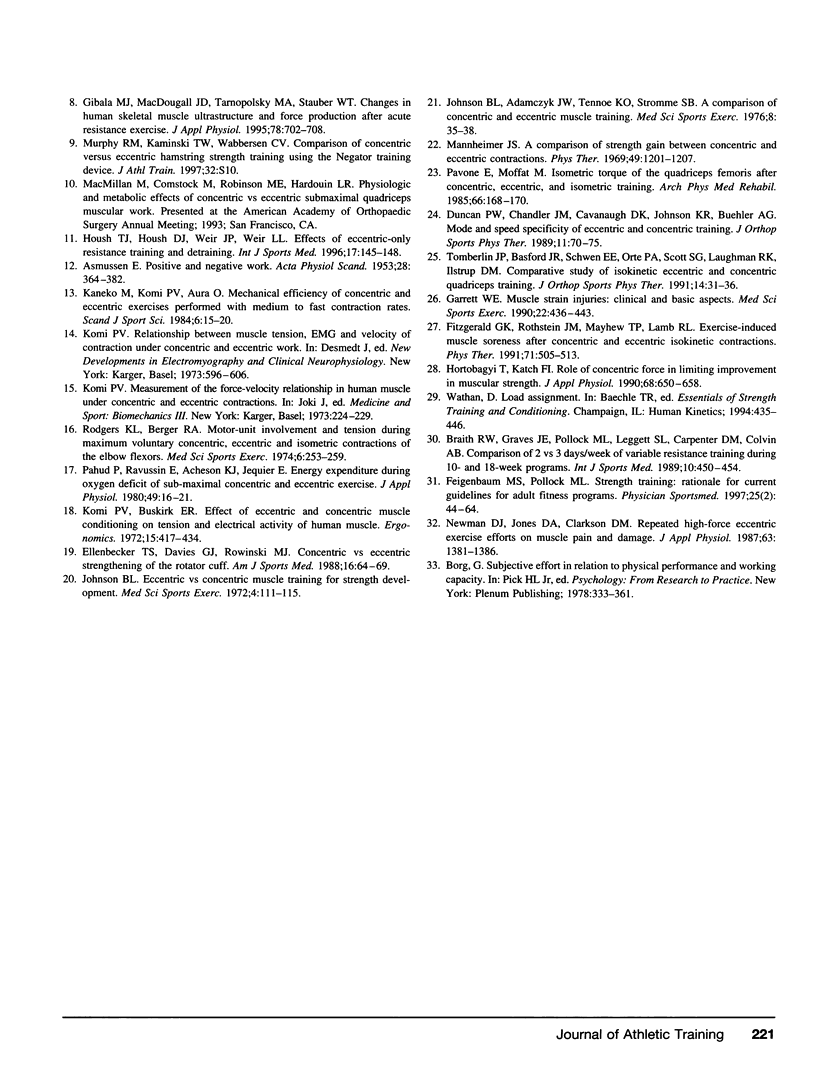
Images in this article
Selected References
These references are in PubMed. This may not be the complete list of references from this article.
- ASMUSSEN E. Positive and negative muscular work. Acta Physiol Scand. 1953;28(4):364–382. doi: 10.1111/j.1748-1716.1953.tb00988.x. [DOI] [PubMed] [Google Scholar]
- Braith R. W., Graves J. E., Pollock M. L., Leggett S. L., Carpenter D. M., Colvin A. B. Comparison of 2 vs 3 days/week of variable resistance training during 10- and 18-week programs. Int J Sports Med. 1989 Dec;10(6):450–454. doi: 10.1055/s-2007-1024942. [DOI] [PubMed] [Google Scholar]
- Burkett L. N. Causative factors in hamstring strains. Med Sci Sports. 1970 Spring;2(1):39–42. [PubMed] [Google Scholar]
- Ellenbecker T. S., Davies G. J., Rowinski M. J. Concentric versus eccentric isokinetic strengthening of the rotator cuff. Objective data versus functional test. Am J Sports Med. 1988 Jan-Feb;16(1):64–69. doi: 10.1177/036354658801600112. [DOI] [PubMed] [Google Scholar]
- Fitzgerald G. K., Rothstein J. M., Mayhew T. P., Lamb R. L. Exercise-induced muscle soreness after concentric and eccentric isokinetic contractions. Phys Ther. 1991 Jul;71(7):505–513. doi: 10.1093/ptj/71.7.505. [DOI] [PubMed] [Google Scholar]
- Garrett W. E., Jr Muscle strain injuries: clinical and basic aspects. Med Sci Sports Exerc. 1990 Aug;22(4):436–443. [PubMed] [Google Scholar]
- Gibala M. J., MacDougall J. D., Tarnopolsky M. A., Stauber W. T., Elorriaga A. Changes in human skeletal muscle ultrastructure and force production after acute resistance exercise. J Appl Physiol (1985) 1995 Feb;78(2):702–708. doi: 10.1152/jappl.1995.78.2.702. [DOI] [PubMed] [Google Scholar]
- Hortobágyi T., Katch F. I. Role of concentric force in limiting improvement in muscular strength. J Appl Physiol (1985) 1990 Feb;68(2):650–658. doi: 10.1152/jappl.1990.68.2.650. [DOI] [PubMed] [Google Scholar]
- Housh T. J., Housh D. J., Weir J. P., Weir L. L. Effects of eccentric-only resistance training and detraining. Int J Sports Med. 1996 Feb;17(2):145–148. doi: 10.1055/s-2007-972823. [DOI] [PubMed] [Google Scholar]
- Johnson B. L., Adamczyk J. W., Tennoe K. O., Stromme S. B. A comparison of concentric and eccentric muscle training. Med Sci Sports. 1976 Spring;8(1):35–38. [PubMed] [Google Scholar]
- Jönhagen S., Németh G., Eriksson E. Hamstring injuries in sprinters. The role of concentric and eccentric hamstring muscle strength and flexibility. Am J Sports Med. 1994 Mar-Apr;22(2):262–266. doi: 10.1177/036354659402200218. [DOI] [PubMed] [Google Scholar]
- Komi P. V., Buskirk E. R. Effect of eccentric and concentric muscle conditioning on tension and electrical activity of human muscle. Ergonomics. 1972 Jul;15(4):417–434. doi: 10.1080/00140137208924444. [DOI] [PubMed] [Google Scholar]
- Mannheimer J. S. A comparison of strength gain between concentric and eccentric contractions. Phys Ther. 1969 Nov;49(11):1201–1207. doi: 10.1093/ptj/49.11.1201. [DOI] [PubMed] [Google Scholar]
- Newham D. J., Jones D. A., Clarkson P. M. Repeated high-force eccentric exercise: effects on muscle pain and damage. J Appl Physiol (1985) 1987 Oct;63(4):1381–1386. doi: 10.1152/jappl.1987.63.4.1381. [DOI] [PubMed] [Google Scholar]
- Pahud P., Ravussin E., Acheson K. J., Jequier E. Energy expenditure during oxygen deficit of submaximal concentric and eccentric exercise. J Appl Physiol Respir Environ Exerc Physiol. 1980 Jul;49(1):16–21. doi: 10.1152/jappl.1980.49.1.16. [DOI] [PubMed] [Google Scholar]
- Pavone E., Moffat M. Isometric torque of the quadriceps femoris after concentric, eccentric and isometric training. Arch Phys Med Rehabil. 1985 Mar;66(3):168–170. [PubMed] [Google Scholar]
- Rodgers K. L., Berger R. A. Motor-unit involvement and tension during maximum, voluntary concentric, eccentric, and isometric contractions of the elbow flexors. Med Sci Sports. 1974 Winter;6(4):253–259. [PubMed] [Google Scholar]
- Yamamoto T. Relationship between hamstring strains and leg muscle strength. A follow-up study of collegiate track and field athletes. J Sports Med Phys Fitness. 1993 Jun;33(2):194–199. [PubMed] [Google Scholar]
- Zarins B., Ciullo J. V. ACute muscle and tendon injuries in athletes. Clin Sports Med. 1983 Mar;2(1):167–182. [PubMed] [Google Scholar]



